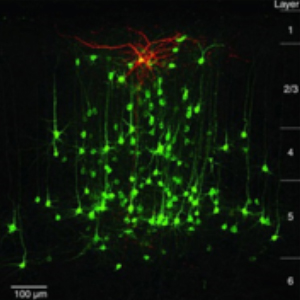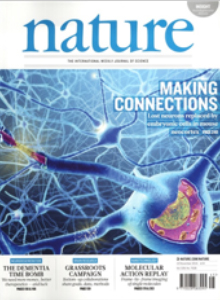Conzelmann Lab - Research
- Research
- Trans-synaptic Tracing
- Innate Immune Response
Rabies Trans-synaptic Tracing and Optogenetics
Our initial observation that the RABV G protein is dispensable for virus budding and can be replaced by other viral glycoproteins (by pseudotyping or exchange of genes), but is essential for transsynaptic spread, provided the basis for the establishment of the first viral mono-transsynaptic tracing system (Wickersham et al., Neuron 2007). Pseudotyped delta G rabies viruses (ΔG RABV) have emerged as gold standard for mapping of direct synaptic connections and analysis of neuronal circuits in the central and peripheral nervous system, which is a fundamental pillar of modern neuroscience. In combination with optogenetics and modern in vivo imaging methods such tracers are opening entirely new avenues of investigation in neuroscience and help in answering major outstanding questions of connectivity and function of the nervous system (Ghanem and Conzelmann, 2016). We are constantly developing and producing novel tracers for collaborating neurobiologists, particularly in the frame of the SFB 870 (Neuronal circuits).
People involved: Dr. Alexander Ghanem, M.Sc. Verena Pfaffinger, M.Sc. Johanna Schulze

Connections (green) of a single cortical neuron (yellow)
from: Wertz et al., Science (2015) Single-cell-initiated monosynaptic tracing reveals layer-specific cortical network modules.
Image featured in “The Beautiful Brain” - Abrams Books, ISBN: 1-4197-2227-1 (2017).

Journal Cover highlighting: Falkner et al.,
Transplanted embryonic neurons integrate into adult neocortical circuits.
Nature. 2016 10;539(7628):248-253.

